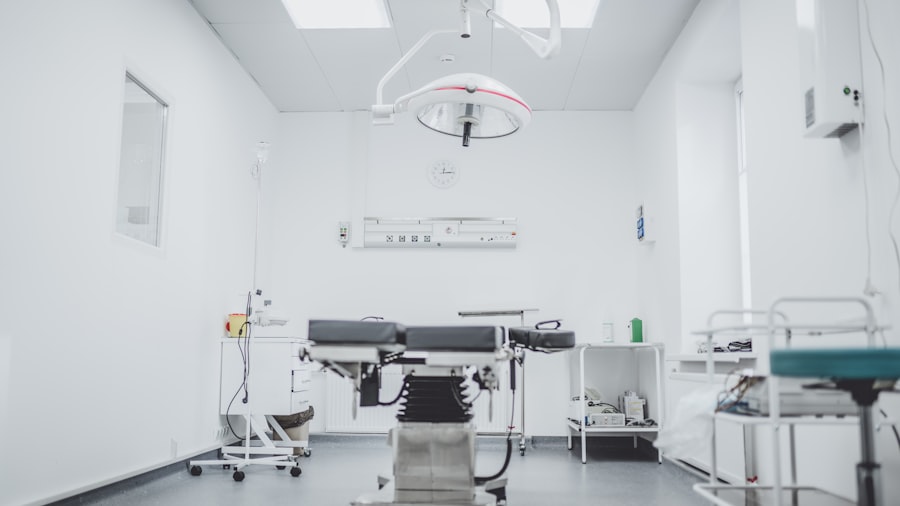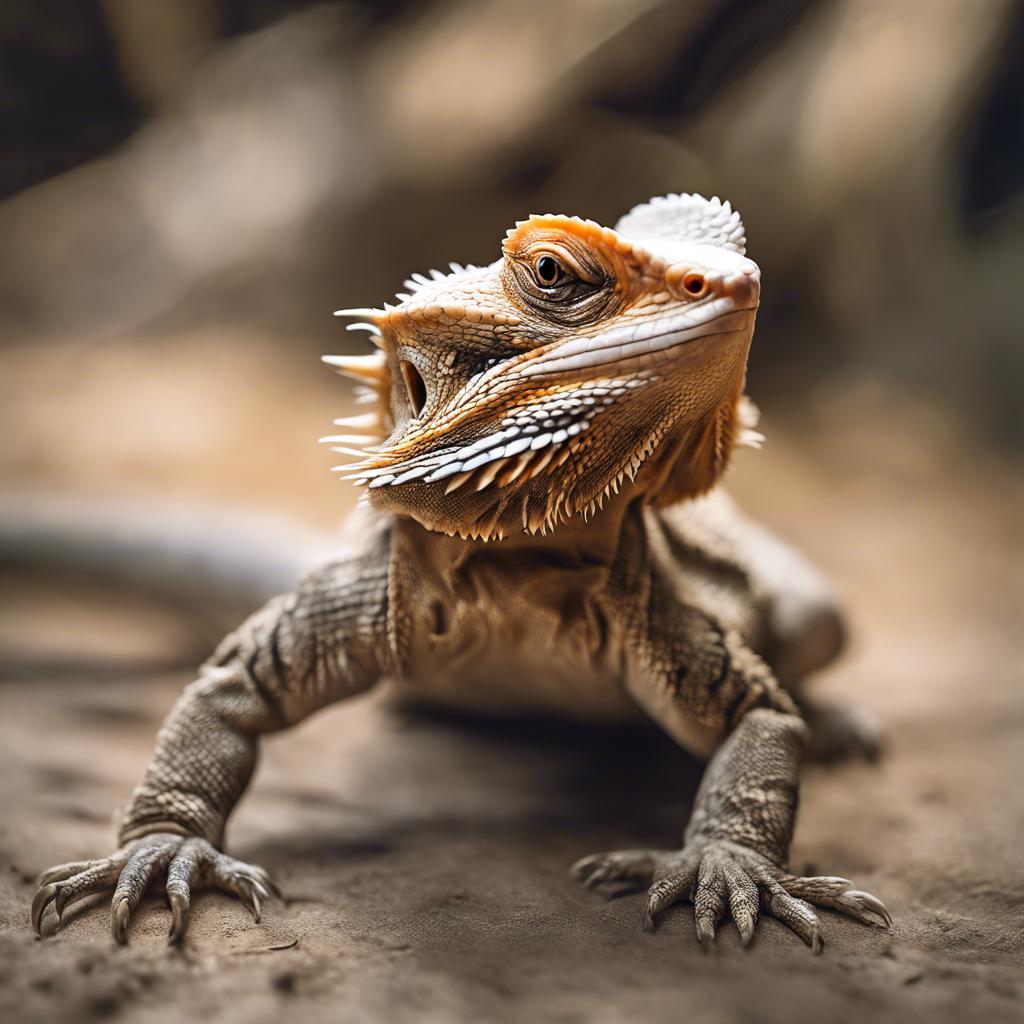Bearded dragons are fascinating reptiles that have become popular pets in recent years. These unique creatures require specific care and attention to ensure their health and well-being. Understanding their behavior and health needs is crucial for providing them with the proper care they require. In this article, we will explore the various aspects of bearded dragon care, including their behavior, environmental factors, nutritional requirements, common health issues, signs of illness, emergency care, and preventive measures.
Key Takeaways
- Bearded dragons are popular pets that require proper care and attention.
- Understanding their behavior and environmental factors can help prevent health issues.
- Lack of movement but normal breathing can be caused by stress, illness, or improper temperature.
- Proper nutrition and hydration are crucial for bearded dragon health.
- Regular check-ups and emergency care can save a bearded dragon's life.
Understanding Bearded Dragon Behavior
Bearded dragons are known for their calm and docile nature. They are diurnal creatures, meaning they are most active during the day and sleep at night. During the day, they enjoy basking under a heat lamp to regulate their body temperature. They are also known to be social animals and can often be seen interacting with their owners or other bearded dragons.
Understanding the typical behavior of bearded dragons is essential for identifying potential health issues. If a bearded dragon suddenly becomes less active or stops moving altogether but is still breathing, it could be a sign of an underlying health problem. It is important to monitor their eating habits as well, as a loss of appetite can indicate illness. By being familiar with their normal behavior patterns, you can quickly identify any changes that may require attention.
Causes of Bearded Dragon Not Moving but Breathing
There are several potential causes for a bearded dragon appearing to breathe but not move. One common reason is brumation, which is similar to hibernation in mammals. During brumation, bearded dragons enter a state of dormancy where they reduce their activity levels and may appear lethargic. This is a natural process that occurs during the colder months and is not a cause for concern.
However, if a bearded dragon is not moving but still breathing outside of the brumation period, it could indicate a respiratory infection. Respiratory infections are common in bearded dragons and can be caused by bacteria, viruses, or fungi. Other symptoms of a respiratory infection may include wheezing, coughing, or discharge from the nose or mouth. It is important to seek veterinary care if you suspect your bearded dragon has a respiratory infection.
Environmental Factors Affecting Bearded Dragon Health
Providing a proper environment for your bearded dragon is crucial for their health and well-being. Temperature, lighting, and humidity are all important factors to consider. Bearded dragons require a basking spot with a temperature of around 95-105 degrees Fahrenheit (35-40 degrees Celsius) and a cooler area with a temperature of around 75-85 degrees Fahrenheit (24-29 degrees Celsius). It is important to provide a gradient of temperatures so that the bearded dragon can regulate its body temperature.
Proper lighting is also essential for bearded dragons. They require both UVA and UVB light to synthesize vitamin D3, which is necessary for calcium absorption. Without adequate UVB light, bearded dragons can develop metabolic bone disease, which can lead to weak bones and deformities.
Humidity levels should also be monitored and maintained at around 30-40%. Too much humidity can lead to respiratory issues, while too little humidity can cause shedding problems. Regular monitoring of these environmental factors is crucial to ensure the health of your bearded dragon.
Nutritional Requirements for Bearded Dragons
Bearded dragons are omnivorous reptiles that require a balanced diet consisting of both animal protein and plant matter. In the wild, they eat a variety of insects, such as crickets and mealworms, as well as leafy greens and vegetables. It is important to provide a varied diet to ensure they receive all the necessary nutrients.
In addition to their main diet, bearded dragons also require proper supplementation. Calcium and vitamin D3 are essential for their bone health. Calcium should be dusted onto their food several times a week, while vitamin D3 should be provided through UVB lighting. Without proper supplementation, bearded dragons can develop metabolic bone disease, which can lead to weak bones and deformities.
It is important to avoid feeding bearded dragons foods that are toxic to them, such as avocado, rhubarb, and spinach. These foods can cause digestive issues and even be fatal. Providing a balanced diet and proper supplementation is crucial for the overall health of your bearded dragon.
Common Health Issues Affecting Bearded Dragons

Bearded dragons are prone to several common health issues that owners should be aware of. One of the most common issues is metabolic bone disease (MBD), which occurs when a bearded dragon does not receive enough calcium or vitamin D3. Symptoms of MBD include soft or deformed bones, difficulty walking or climbing, and tremors. MBD can be prevented by providing a proper diet and adequate UVB lighting.
Impaction is another common issue in bearded dragons. This occurs when they ingest substrate or other foreign objects that cannot be digested. Symptoms of impaction include loss of appetite, bloating, and difficulty passing stool. Providing a clean and safe enclosure with appropriate substrate can help prevent impaction.
Respiratory infections are also common in bearded dragons and can be caused by bacteria, viruses, or fungi. Symptoms of a respiratory infection include wheezing, coughing, discharge from the nose or mouth, and lethargy. Respiratory infections can be serious and require veterinary care.
Signs of Illness in Bearded Dragons
It is important to monitor your bearded dragon for any signs of illness. Changes in behavior, appetite, and appearance can all indicate a health issue. If your bearded dragon becomes less active, stops eating, or shows any signs of distress, it is important to seek veterinary care.
Other signs of illness in bearded dragons include weight loss, swollen joints, discharge from the eyes or mouth, and changes in skin color or texture. Regular check-ups with a veterinarian can help identify any potential health issues before they become serious.
Emergency Care for Bearded Dragons
In case of an emergency, it is important to know what to do to provide immediate care for your bearded dragon. If your bearded dragon is injured or in distress, it is important to keep them warm and calm. Avoid handling them too much, as this can cause further stress.
If your bearded dragon is not breathing or their heart has stopped, you can perform CPR by gently compressing their chest. However, it is important to seek veterinary care as soon as possible in these situations.
Preventive Measures for Bearded Dragon Health
There are several preventive measures you can take to keep your bearded dragon healthy. Providing a proper diet and supplementation is crucial for their overall health. Regularly monitoring and maintaining the environmental conditions in their enclosure is also important.
Regular check-ups with a veterinarian are essential for identifying any potential health issues before they become serious. A veterinarian can also provide guidance on proper care and answer any questions you may have about your bearded dragon's health.
Importance of Proper Bearded Dragon Care
Proper care and understanding of bearded dragon behavior are crucial for ensuring their health and well-being. By providing a suitable environment, a balanced diet, and regular veterinary care, you can help prevent common health issues and ensure that your bearded dragon lives a long and healthy life. Remember to monitor their behavior, appetite, and appearance for any signs of illness and seek veterinary care if needed. With proper care and attention, your bearded dragon can thrive as a happy and healthy pet.
If you have noticed that your bearded dragon is not moving but still breathing, it could be a cause for concern. It's important to understand the potential reasons behind this behavior and how to address it. In a related article by Reptile Wizard, they discuss the possible causes of a bearded dragon's lack of movement and provide helpful tips on what you can do to help your pet. To learn more about this topic, check out their article on bearded dragon not moving but breathing.
FAQs
What is a bearded dragon?
A bearded dragon is a type of lizard that is native to Australia. They are popular pets due to their docile nature and unique appearance.
What are some common reasons why a bearded dragon may not be moving?
Some common reasons why a bearded dragon may not be moving include illness, injury, brumation (a hibernation-like state), or stress.
What are some signs that a bearded dragon may be ill?
Signs that a bearded dragon may be ill include lethargy, lack of appetite, weight loss, diarrhea, or abnormal behavior.
What should I do if my bearded dragon is not moving but is breathing?
If your bearded dragon is not moving but is breathing, it is important to seek veterinary care as soon as possible. This could be a sign of a serious health issue that requires immediate attention.
How can I prevent my bearded dragon from becoming ill?
To prevent your bearded dragon from becoming ill, it is important to provide them with a healthy diet, clean living environment, and regular veterinary check-ups. Additionally, be sure to handle your bearded dragon gently and avoid exposing them to stressful situations.

